#Thomas Cleary
Explore tagged Tumblr posts
Text
From “The Flower Bank World” in the Avatamsaka Sutra

The Buddhist Painting of Songgwansa Temple, Suncheon, South Korea (Illustration of Avatamsaka Sutra)
“Then Universally Good also said to the assembly, ‘In the land masses of this ocean of worlds are seas of fragrant waters, as numerous as atoms in unspeakably many buddha-fields. All beautiful jewels adorn the floors of those seas; gems of exquisite fragrances adorn their shores. They are meshed with luminous diamonds. Their fragrant waters shine with the colors of all jewels. Flowers of all kinds of gems swirl on their surfaces. Sandalwood powder settles on the bottom of the seas. They emanate the sounds of Buddhas’ speech. They radiate jewellike light. Boundless enlightening beings, holding various canopies, manifest mystic powers causing the adornments of all worlds to appear therein. Stairways of ten kinds of precious substances are set out in rows, with balustrades of ten kinds of jewels surrounding them. White lotuses ornamented with jewels, as many as atoms in four continents, are spread over the waters, in full bloom. There are unspeakable hundreds of thousands of billions of trillions of banners of ten precious elements, banners of belled gauze of raiments of all jewels, as many as sand grains in the Ganges river, jewel flower palaces of boundless forms, as many as sand grains in the Ganges river, a hundred thousand billion trillion lotus castles of ten precious substances, forests of jewel trees as many as atoms in four continents, networks of flaming jewels, as many sandalwood perfumes as grains of sand in the Ganges, and jewels of blazing radiance emitting the sounds of Buddhas’ speech…”
--From book five “The Flower Bank World” in the The Flower Ornament Scripture (Buddhāvataṃsaka Sūtra), translated from Chinese by Thomas Cleary. The various sutras were originally composed in Sanskrit and compiled and translated into Chinese in the 5th century CE. Thomas Cleary’s English translation is based on the Chinese translation done by the Khotanese monk Shikshananda (652-710 CE), who translated it at the request of the Tang Empress.
I stumbled upon this sutra in the back of a book that included a ‘glossary of buddhist terms’ while at a Zen meditation retreat. Flower cosmology? That sounds like my shit. Since I didn’t have my phone I wrote the name down on a piece of paper and slipped it into my backpack. It really is as incredible as I imagined it to be.
“Alan Fox has described the sutra's worldview as ‘fractal’, ‘holographic’, and ‘psychedelic’”—yes.
“In the Huayan school, the teaching of interpenetration is depicted through various metaphors, such as Indra's net, a teaching which may have been influenced by the Gandhavyuha chapter's climax scene in Vairocana's Tower. Indra's net is an infinite cosmic net that contains a multifaceted jewel at each vertex, with each jewel being reflected in all of the other jewels, ad infinitum. Thus, each jewel contains the entire net of jewels reflected within.”
#Avataṃsaka Sūtra#Avatamsaka Sutra#flower garland sutra#Hwaeom#Kegon#Huayan Buddhism#Huayan#chan buddhism#Xianshou#water#buddhism#religion#mysticism#Thomas Cleary#literature#philosophy#metaphysics of flowers#The Flower Ornament Scripture#Buddhāvataṃsaka Sūtra#Buddhāvataṃsaka-nāma-mahāvaipulya-sūtra#Sanskrit
70 notes
·
View notes
Text

* * * *
“If people can be open-minded and magnanimous, be receptive to all, take pity on the old and the poor, assist those in peril and rescue those in trouble, give of themselves without seeking reward, never bear grudges, look upon others and self impartially, and realize all as one, then people can be companions of heaven. If people can be flexible and yielding, humble, with self-control, entirely free of agitation, cleared of all volatility, not angered by criticism, ignoring insult, docilely accepting all hardships, illnesses, and natural disasters, utterly without anxiety or resentment when faced with danger or adversity, then people can be companions of earth.” Awakening to the Tao by Liu I-ming (1734–1821) Translated by Thomas Cleary
[alive on all channels]
18 notes
·
View notes
Text
#OTD in 1939 – In one of the more intriguing episodes of World War II, German U-Boat 35 under the command of Kapitan Werner Lott disembarked 28 men at Dingle, Co Kerry from the Greek cargo ship Diamantis.
About 15.40 hours on 3 Oct, 1939, the Diamantis was torpedoed by U-35 and sank 40 miles west of the Scilly Islands. Because the lifeboats were not suited for use in the bad weather, Lott decided to take all crew members aboard and landed them the next day at Dingle, Co Kerry. On a stormy evening in October 1939 the realities of World War II reached the shores of the Dingle Peninsula. A crowd of…
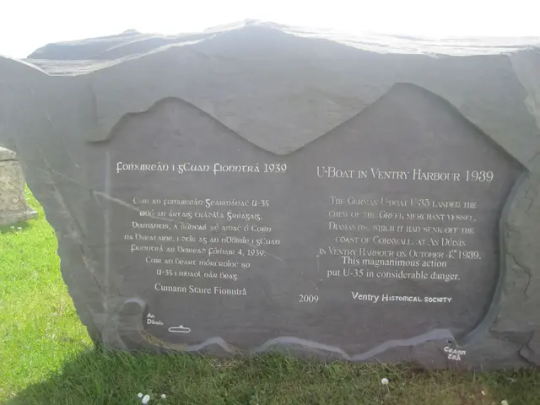
View On WordPress
#Diamantis#Dingle Peninsula#England#Germany#Greece#Greek Prisoners#History#History of Ireland#Ireland#Irish History#Irish Neutrality#Kapitan Werner Lott#Lord Louis Mountbatten#Sean Cleary#Thomas Cleary#Ventry Harbour#WWII
6 notes
·
View notes
Text
Shōsan-Dōgen et autres
Lorsque les gens oublient qu’ils sont appelés à mourir, et agissent comme s’ils croyaient vivre éternellement, ils se montrent incapables d’apprécier les mois et les années qui passent. Regardez-les donc! Leurs seules raisons d’être? Cupidité, col��re et mensonge! Ils confondent bonté et flatterie, sens de l’honneur et cajoleries. Qu’il s’agisse de la société ou de leur propre famille, ils…

View On WordPress
2 notes
·
View notes
Photo
* * * *
Externally, if you forget fame and profit, your body will be at peace. Inwardly, if you forget cogitation and rumination, your mind will be at peace.
— Anonymous Taoist (late Qing dynasty (1644-1911), Secret Records of Understanding the Way, :: Thomas Cleary translated and edited, Taoist Meditation: Methods for Cultivating a Healthy Mind and Body. (via modernshxmxn)
[alive on all channels]

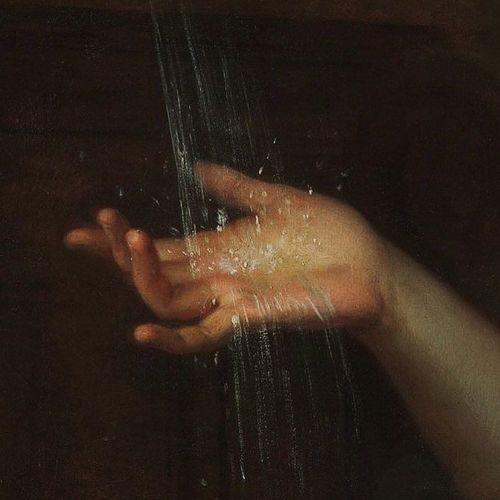
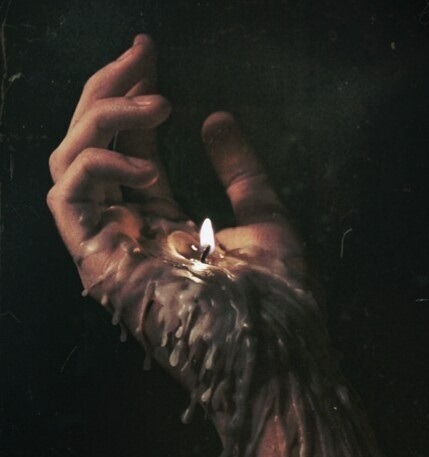

Untitled, Christine Brache 2017 // Portrait of a Woman (Detail), Nicolas de Largillière 1696 // {Cero Umano}, Gorche 2013 // Apollo et Daphne (Detail), Rene-Antoine Houasse1677
#alive on all channels#modernshmn#Christine Brache#hands#symbols#the senses#felt sense#feeling#Taoist#Thomas Cleary#quotes#bodymind
38K notes
·
View notes
Text
Who We Were In Time
I was recently reading Thomas Cleary’s The Tao of Politics. These are extracts from the heavily Taoist document the Huainanzi. Having read another set of extracts (Original Tao), I thought it would be a refresher, and helps convince me to buy a full translation which is 1000 pages long. As of this writing, it’s in the mail, so I got convinced.
However, beyond my compulsion and Cleary’s ever-excellent translations, he made an interesting comment on the Huainanzi and Taoism. The Huainanzi was written in a time of rebuilding after a painful period of war, a look back and a plan for the future. Cleary noted other formative Taoist documents, the Tao Te Ching and Chuang-tzu were written in times of war, and were affected as such. These were Taoist documents but written in radically different times.
That got me thinking about history and the words of wisdom we seek. Yes, we all know writings we partake in are written “of the time,” under certain conditions, and so forth. We accept that, but Cleary’s comment made me think that we know that but maybe we really need to think about it.
We may read books and scripture and so on that are written of their time, but even books of the same lineage like these Taoist documents are written under radically different situations. This isn’t different generations alone, these are people who wrote between war and peace, destruction, and construction, dying randomly from civil strife or having a chance to not do so.
I think it really behooves us to look at documents of our philosophical and mystical efforts and when we see something of it’s time, pause and reflect on that. Maybe we don’t just read and admire and learn from the great minds and philosophers in our library but ask what were they going through and seeing. History is experienced.
It’s said that Lao Tzu, author of the Tao Te Ching wrote it while hightailing it out of a city in disgust with the age. Sure, it’s probably mythical-metaphorical, but people of the time might get it as wise guys were saying “screw this, I’m riding a buffalo into the mountain” because things sucked.
It’ll help us better understand what we read because we get the time, the who, and the why. It’ll also let us have some empathy on those we seek to learn from. That above comment about bugging out of society makes me feel some sympathy for Lao Tzu even if he is a pen name or metaphor. Sometimes I want that buffalo - and boy do I get Chuang-Tzu’s desire to be poetically sarcastic as hell.
But another advantage to this? When you look at philosophical lineages - again like Taoism - across time, the writings occur in radically different situations. However among those books and essays across centuries you read, there are consistent patterns. Those consistent patterns are lessons that have survived different times, places, events - they’re worth learning from.
None of us are outside of history. When understanding timeless wisdom, we need to understand history to learn what’s transcended it - and understand what people went through. The timeless and the specific together.
-Xenofact
1 note
·
View note
Text
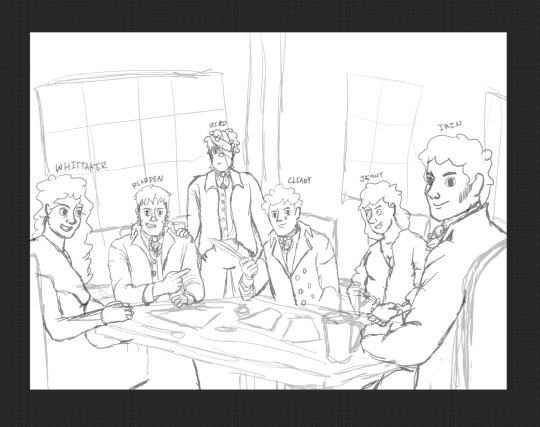
Girls when they plot to overthrow the British government
#c: william rearden#c: maria whittaker#c: joseph bird#c: iain hoyle#c: thomas cleary#c: jenny price#art wip#digital art#jory.img
12 notes
·
View notes
Text
Further reading: Introductory texts to Buddhism, Taoism, The Tang Dynasty (when the story is set) and the Ming Dynasty (when it was written)
All available on the Internet Archive.
Buddhism
Old Path White Clouds by Thich Nhat Hahn
Stepping into Freedom: An Introduction to Buddhist Monastic Training by Thich Nhat Hahn
The Other Shore: A New Translation of the Heart Sutra by Thich Nhat Hahn
Elaborations on emptiness : uses of the Heart Sūtra by Donald Lopez
Classics of Buddhism and Zen : the collected translations of Thomas Cleary
Youtube channel with teachings I love: Longchenpa, Zen/Chan Buddhism, Mahayana Buddhism.
Daoism
The Tao of Pooh by Benjamin Hoff
Tao Te Ching translated by Jonathan Star
What is Tao? by Alan Watts
The Zhuangzi
A video from a channel I really like
Tang Dynasty
China's Golden Age: Everyday life in the Tang Dynasty by Charles Benn
Women of the Tang Dynasty by May Holdsworth
Ming Dynasty
The Glory and Fall of the Ming Dynasty by Albert Chan
A Tale of Two Melons: Emperor and Subject in Ming China by Sarah Scheewind
The Eunuchs in the Ming Dynasty by Shih Shan Henry Tsai
A Brief History of Chinese Fition by Lu Hsun
Enjoy the read.
108 notes
·
View notes
Text
Bridgerton folks, thank you for the warm welcoming to my lastest creation!
We were left with poor Past!Colin passed out after seeing him and Pen.
What is going to happen now?
I hope you'll enjoy this one.
--
When Colin come back to reality, he was in a luxurious bed. There was light inside, meaning he certainly could not make it in time for his wedding.
He thought he would be angry or frustrated... Instead he was relieved.
Why was he relieved?
Then, memory of the night started flooding his brain.
Pen and a copy of himself... Groping and kissing on that bench.
He was up in a moment, trying to understand if he just dreamed everything or else.

He looked around and saw his robe - that didn't pay well for his sanity.
With the robe on, he ventured into the estate. It was cleary the Featherington one, but with a sophisticated touch it never had the few times he was there before.
He could hear Pen's voice, a shiver crossing him as the idea that what he did saw was real.
Arrived at the drawing room, he found a small table, with three plates.
Pen was already there, looking at him with something in her eyes that made his stomach turn.
"Colin! Thank goodness you're awake. I was so worried."
She went to touch his hand, then she seemed to suddenly remember who he was and stopped in her track. He couldn't not notice the wedding ring on her finger.
She was married to his copy?
He sat, overwhelmed.
"Do you know what it is happening?"
The other Colin entered the room in that moment.
"We were waiting for you. I know how it sounds and I know what you're going to do, because I already lived it.
I'm you - as you already figured out - I'm actually you, not a copy. I'm just ten years older andmuch more handsome, " he said, earning a scoff from Pen.
He did not stop, but went near Pen, placing a tender kiss on her head.
"Yes, I'm married to Pen. We've been married nine years now. I'm sure you can do the math..."

Older Colin sat near him, serving a generous amount of pastries and sweets is his plate. He was glad to see that certain stuff didn't change.
"I know you have questions. We'll go on a small ride soon. For now, rest assured that you'll come back in a week from now, and you'll be just outside Bridgerton house. Ready for your wedding."
"A week? With you two??"
He asked, struggling to believe everything he just listen.
"With us five, in fact. Ten if you conts the servants. The kids are going to be here shortly. Everyone know you are a distant cousin who looks like exactly like me. Just reserve your questions for later."
And a moment after, three little hurricanes arrived.
"You must be Christopher. You look exactly like papa. I'm Agatha!" said a young girl with his eyes and Pen's hair, no older than nine. His heart ached for being called papa, even if it wasn't him.
The two boys were twins and they seemed much shy, they could be no older than four.
"These are Thomas and George," the twins were hiding behind Pen's body.
Pen looked at him again, before taking the twins and the girl and leaving them.
"Papa and Cousin Christopher have to talk," she said, leaving him to face his older self.
He felt suddenly green.
They had a family. Pen and him were a family.
"Take your time. I know it's a lot to digest. When you're ready, come meet me in the stable," leaving him to deal with the news, as if his world didn't suddenly shifted on its axis.
Tbc
#polin#bridgerton#bridgerton season 3#bridgerton s3#polin positivity#polin bridgerton#polin brainrot#colin bridgerton#penelope bridgerton
25 notes
·
View notes
Text

When flowing water...meets with obstacles on its path, a blockage in its journey, it pauses. It increases in volume and strength, filling up in front of the obstacle and eventually spilling past it...
Do not turn and run, for there is nowhere worthwhile for you to go. Do not attempt to push ahead into the danger... emulate the example of the water: Pause and build up your strength until the obstacle no longer represents a blockage.
— Thomas F. Cleary, I Ching: The Book of Change
39 notes
·
View notes
Text
thanks for tagging @closetoyou-pdf and @wineonmytshirt <3
last song: push go by poppy
favourite colour: purple
last book: reading the art of war by sun tzu translated by thomas cleary
last tv show: watching lost and a chinese drama called the double with ky family
last movie: everything everywhere all at once
sweet/savoury/spicy: generally savoury -> spicy -> sweet
last thing I googled: nodding emoji
relationship status: single
current obsession: mcr and bandom in general, sabrina carpenter, hermitcraft lore, all for the game and taylor swift still lurking though
looking forward to: uhhh idk making more gifs I guess? also my exam results in january I don't want to wait anymore
npt: @chappellrroan @mainepdf @gambitandrogues @tolerateit @katesprydes
9 notes
·
View notes
Text
Trimax Volume 8 has one of my favorite Vash quotes in it.
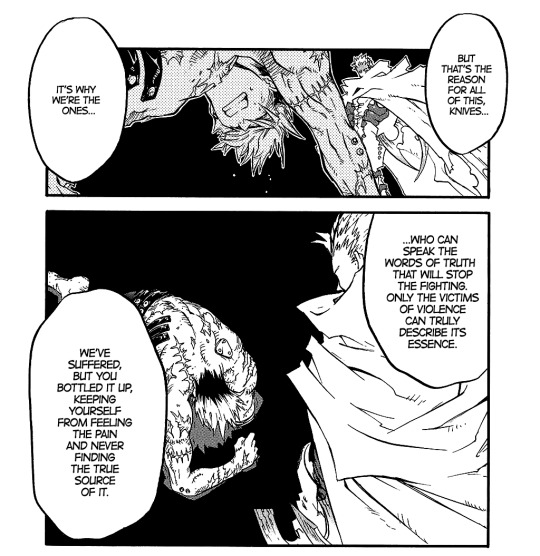
"Only the victims of violence can truly describe its essence."
Really, this whole exchange with Knives that happens in the first chapter of this volume sounds very Buddhist in its language. I'll do my best to parse out some of the concepts I think are at play here, but I should make it clear that I do not have as extensive a personal history with Buddhism as I do with Christianity. I was raised Christian growing up, but my experience as a Chinese-American kid with immigrant parents meant a lot of early childhood exposure to works of fiction with Buddhist themes (think Journey to the West). Also, because we lived in an area with a sizeable population of east and southeast asian immigrants, I developed a surface level familiarity with Buddhist iconography and terminology thanks to friends who were raised Buddhist and regular encounters with Buddhist artwork in local businesses. The rest of my knowledge comes from informal self-study. If anyone out there has more relevant experience in this field, feel free to correct me if I get anything wrong.
Here we go: LONG POST AHEAD

What first caught my attention was Knives' word choice - "I was enlightened." I'm curious what word in the Japanese text was translated as "enlightened" here. A lot of foundational Buddhist literature was written in Sanskrit, and the Sanskrit word that is often translated into English as "enlightenment" is bodhi. This word carries connotations of waking up and coming into awareness and knowledge. In Japanese, the words I've seen for this concept are satori and kenshō.
According to Thomas Cleary, who translated many pieces of Zen Buddhist literature throughout his career, kenshō is the "Zen insight into the essence of one's own being," and satori is "complete kenshō" (1) . Kenshō is written using the Chinese characters 見 (jiàn) which means "see" and 性 (xìng) which means "nature" or "character." This is of particular interest for the above panels, because Knives is saying his pain "revealed [his] true self," and he wants humans to likewise look within to confront the reality of what they are.
Now, at this point in the story, it's pretty clear that Knives' ideas about both who he is and the nature of humanity as a whole are flawed. He's insisting that he has attained enlightenment - some transcendent insight into reality - but from a Buddhist perspective, he's very far off the mark because his mindset was skewed from the start. In fact, Vash gives a keen diagnosis of how Knives is going wrong when he says "We've suffered, but you bottled it up, keeping yourself from feeling the pain and never finding the true source of it." Vash's point is that after obtaining the knowledge of humanity's capacity for evil, Knives only sought to avoid further pain at all cost instead of seeking a deeper understanding of how he's been hurt. The conclusion Knives drew was "the fundamental nature of humans is that they are a threat to me, and they are my inferiors. If they cause pain to me, it is because of their inherent evil, and the only way I can eliminate the potential for suffering is by killing them all." But contrary to Knives' perspective, the path out of suffering in the enlightened Buddhist perspective isn't through forcibly imposing your will on the rest of world until you've destroyed everything that could hurt you.
Instead, Buddhism considers dukkha (suffering) the first of the Four Noble Truths and emphasizes that we should accept the reality that as finite beings in a world constantly in flux, unpleasant emotions and experiences will always find us. There always will be elements outside of our control, but we don't have to allow the hurt they cause to create persistent negative states of being. What we need to do is to not run away from suffering but to understand the cause of it (find "the true source of it" as Vash says) and develop an awareness of how it arises within us - this is the second Noble Truth, called samudhaya. In Buddhism, the origin of suffering is linked to desire and attachment, and Buddhist philosophy posits that by following the fourth Noble Truth, known as the Noble Eightfold Path, the practitioner can experience the third Noble Truth, nirodha (cessation of the desires giving rise to suffering).
With the way Knives currently is, this cessation is something that'll be out of reach for him even if he succeeds in his goals, because he hasn't reckoned with the fear and need for control that is motivating him. He can't complete the path to enlightenment, because his view of the path is obscured by self-delusion. Knives constantly acts as though his goals and feelings are the only ones that matter, but suppose he does realize his vision and kill every human being on the planet. What then? Isn't he effectively alone since there is no one else around that he considers his equal? And where does all the hate that he has purposely cultivated for over a century go? It's doubtful that he'd be able to let go of his attachment to such emotions so easily.
(1): The Thomas Cleary book I'm referencing is Kensho: The Heart of Zen
126 notes
·
View notes
Text
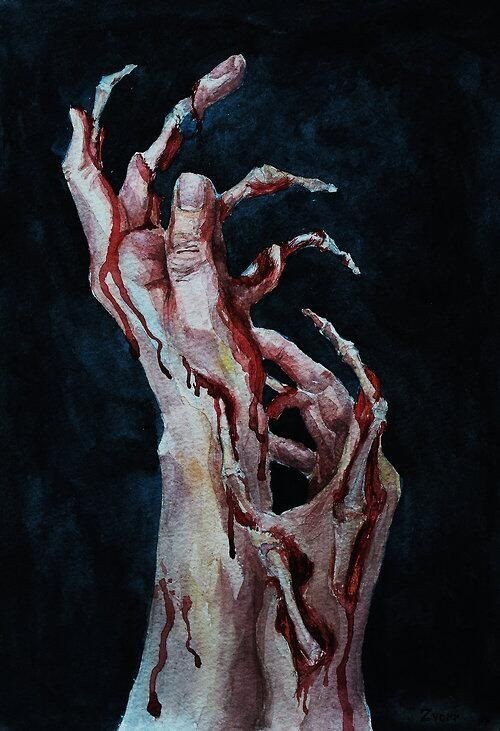
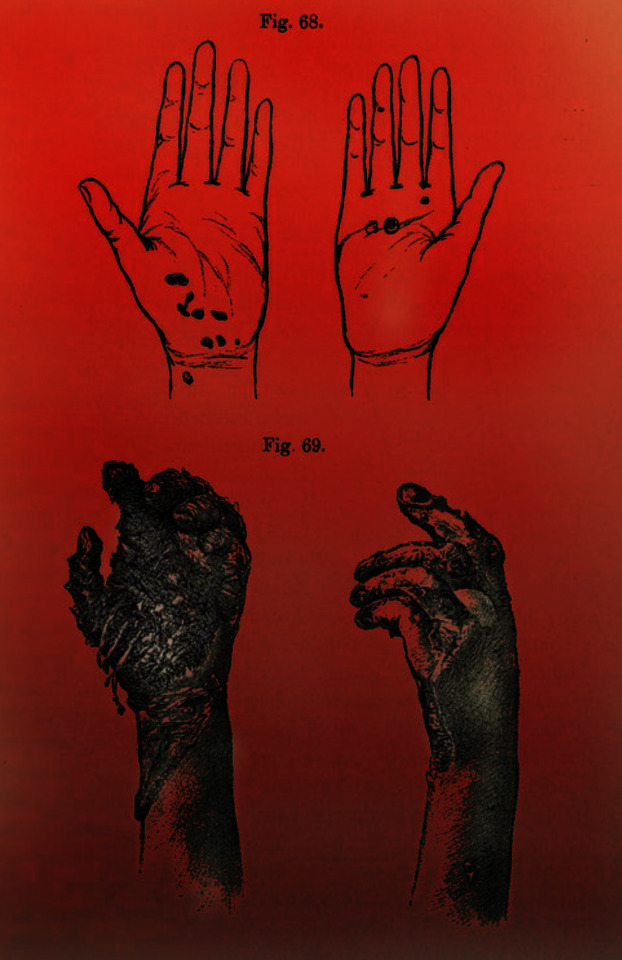
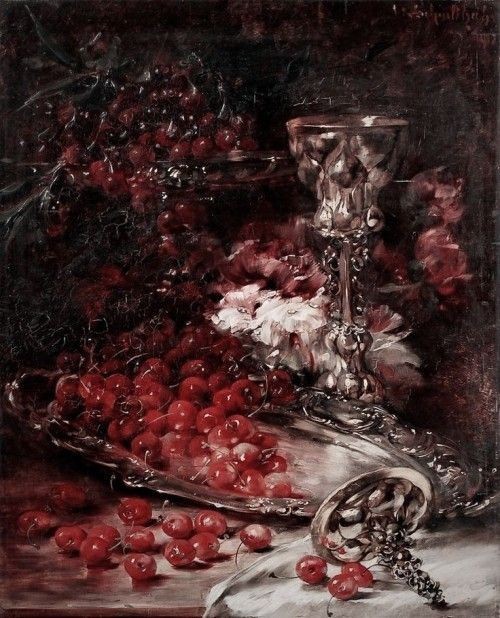
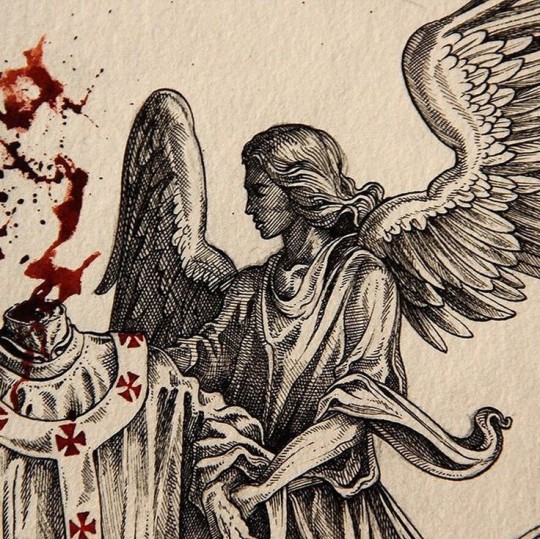
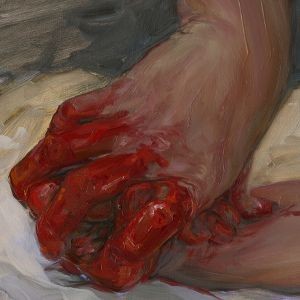
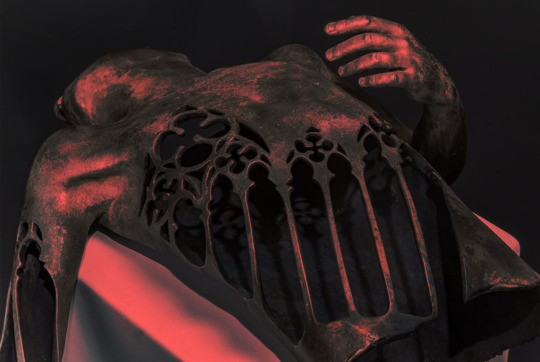

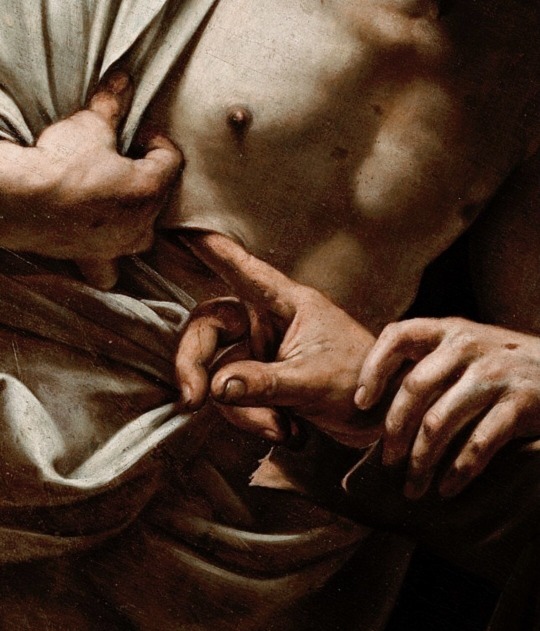
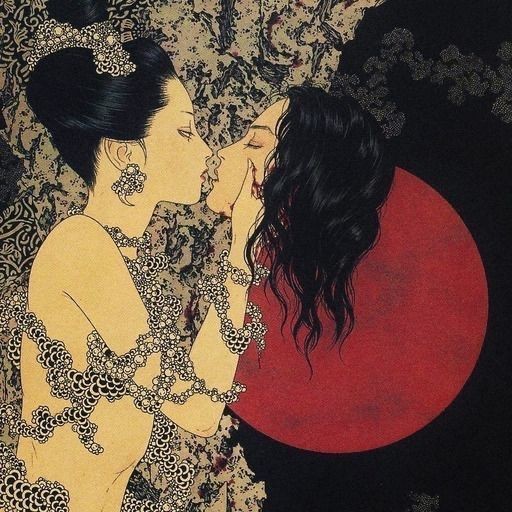
i think i hauve covid
[Zvorr on deviantart, Effects of Lightning Strikes on the Human Body (recolored), Jose Gabriel Alegria Sabogal
Jen Mazza, Natalie Schultheiss, Tracery by Timothy Cleary (recolored)
Takato Yamamoto, adapto on tumblr, The Incredulity of St. Thomas]
#rowan screams into the void#DONT LOOK AT ME#to see what this is advertising you must go to my ao3 account#i dont think im linking this one people
17 notes
·
View notes
Text
February Wrap-Up!

It has been a good month for me. Things have settled down around me a great deal, and I am getting comfortable with my new routines and habits that I am trying to put into practice.
Like I assumed this month was much better in terms of progress since I have adjusted to my new medication and the new year. Things could still be better of course, and that is what I plan to focus on in March, and not allow myself to become complacent.
Progress Report
Books Read: 12/100
We Could have Been Friends, My Father and I by Raja Shehadeh My Happy Marriage, vol. 2 by Akumi Agitogi The Richest Man in Babylon by George S. Clason The Familiar by Leigh Bardugo Paradise Rot by Jenny Hval The Code of the Samurai translated by Thomas Cleary When Among Crows by Veronica Roth Under the Banner of Heaven by Jon Krakauer
Words Written: 8.7k/50k
Language Study
German: 0/100 Latin: 1/100 Russian: 0/100
Began the planing and outlining phase for an article to be published in the magazine the museum I currently work for puts out every year. I will be writing about the history of use of one of the planes in our collection by the US military during WWII.
Began planning out potential research projects for the Fulbright scholarship. I am still in the early phases of meetings and understanding the exact requirements, but I believe it is important to have a variety of ideas in mind.
Began looking at the Marshall Scholarship, due to hearing about Fulbright students having their funds cut off and becoming stranded abroad.
3 notes
·
View notes
Text
Livre-devenir
Les confucéens privilégient la maîtrise de soi et le retour à la justesse, les bouddhistes mettent l’accent sur la réduction des dix mille phénomènes en pure vacuité, et les taoïstes considèrent comme chose essentielle l’affinement fondateur du moi. Les sages de ces trois religions centrent leur enseignement sur l’affranchissement de la colère et de la cupidité. * “La distance qui sépare les…

View On WordPress
0 notes
Text
Reading List - 2025
Currently Reading:
Black Beauty by Anna Sewell
Digital Logic and State Machine Design by David J. Comer
The Third Man Factor by John Geiger
Books Read:
Adventures in Cryptozoology Vol. 1 by Richard Freeman
Ancient Mysteries, Modern Visions by Philip S. Callahan
Deciphering the Indus Script by Asko Parpola
Eat That Frog! by Brain Tracy
Egyptian Hieroglyphics by Stephanie Rossini
Gods and Myths of Ancient Egypt by Robert A. Armour
How Writing Came About by Denise Schmandt-Besserat
Jung and the Tarot by Sallie Nichols
Leonard McCoy: Frontier Doctor
The Mysterious Stranger by Mark Twain
Some Account of the Council of Nicea by John Kaye
The War of the Worlds by H. G. Wells
Future Reading:
All the King's Men by Robert Penn Warren
Always Running by Luis J. Rodriguez
Anne of Green Bagels by Susan Schade and Jon Buller
Anne of Green Gables by L. M. Montgomery
The Anti-Mary Exposed by Carrie Gress
The Arm of the Starfish by Madeleine L'Engle
The Art Nouveau Style by Stephan Tschudi Madsen
As I Lay Dying by William Faulkner
Beezus and Ramona by Beverly Clearly
The Blade Itself by Joe Ambercrombie
The Book of Dragons by Edith Nesbit
Braiding Sweetgrass by Robin Wall Kimmerer
Brave New World by Aldous Huxley
The Call of the Wild by Jack London
Carmilla by Josphen Sheridan Le Fanu
The Catcher in the Rye by J. D. Salinger
Champions of the Rosary by Donald H. Calloway
The Color Purple by Alice Walker
The Complete Works of H. P. Lovecraft
Cranfod by Elizabeth Gaskell
Cubism by Guillaume Apollinaire
Dancing with Siva by Sivaya Subramuniyaswami
Dark Journey Deep Grace by Roy Ratcliff
Dear Mr. Henshaw by Beverly Cleary
Demon Copperhead by Barbara Kingsolver
The Dialogue of St Catherine of Siena by St. Catherine
Ender's Game by Orson Scott Card
Equal Rites by Terry Pratchett
Evolution by Nowell Stebbing
Expressionism by Ashley Bassie
Fahrenheit 451 by Ray Bradbury
Fearsome Creatures of the Lumberwoods by Hal Johnson
Found in a Bookshop by Stephanie Butland
Frankenstein by Mary Shelly
Freaks on the Fells by R. M. Ballantyne
Freckles by Gene Stratton-Porter
Fundamentals of Character Design by Various Authors
A Girl of the Limberlost by Gene Stratton-Porter
Good Hunting by Theodore Roosevelt
Graceling by Kristin Cashore
The Great Gatsby by F. Scott Fitzgerald
The History of Don Quixote de la Mancha by Miquel de Cervantes Saavedra
Howl's Moving Castle by Diana Wynne Jones
Humorous Ghost Stories by Various Authors
Illuminated Manuscripts by Tamara Woronowa
The Imitation of Christ by Thomas a Kempis
The Intellectual Life: Its Spirit, Conditions, Methods by Fr. A. G. Sertillanges
The Island of Doctor Moreau by H. G. Wells
Jane Eyre by Charlotte Bronte
The Javelin Program by Derin Edala
Joan Miro by Joan Miro
The Jungle by Upton Sinclair
Jurassic Park by Michael Crichton
The Life of St Catherine of Siena by Blessed Raymond of Capua
Light of the Western Stars by Zane Grey
Living by the Sword by Eric Demski
The Longest Cocktail Party by Richard DiLello
Mary Barton by Elizabeth Gaskell
Mere Christianity by C. S. Lewis
Middlemarch by George Eliot
My Brilliant Friend by Elena Ferrante
North and South by Elizabeth Cleghorn Gaskell
Orlando by Virginia Woolf
Otis Spofford by Beverly Clearly
Pat of Silver Bush by L. M. Montgomery
Peter and Wendy by J. M. Barrie
The Phantom Tollbooth by Norton Juster
Return of the Thief by Megan Turner
The Secret of the Rosary by St. Louis de Montfort
The Shining by Stephen King
Show Me God by Fred Heeren
The Silmarillion by J R R Tolkien
The Strange Case of Dr. Jekyll and Mr. Hyde by Robert Louis Stevenson
Strange Love by Ann Aguirre
The Story of a Soul by St. Therese of Liseux
The River by Gary Paulsen
The Tenant of Wildfell Hall by Anne Bronte
Things My Son Needs to Know About the World by Fredrik Backman
Till We Have Faces by C. S. Lewis
The Time Machine by H. G. Wells
To Kill a Mockingbird by Harper Lee
Treasure Island by Robert Louis Stevenson
Villette by Charlotte Bronte
Walking Practice by Dolki Min
We Are Where the Nightmares Go and Other Stories by C. Robert Cargill
The Weiser Field Guide to Cryptozoology by Deena West Budd
The White Mountains by John Christopher
Whose Body? by Dorothy L. Sayers
Wives and Daughters by Elizabeth Gaskell
4 notes
·
View notes